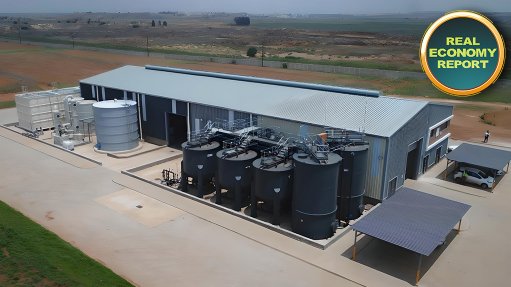Fake but believed
It’s surprising how easily news consumers fall for disinformation, or fake news, as it is now widely known since Donald Trump popularised the phrase during the US Presidential campaign in 2016. I say popularised because the phrase is as old as the hills, having been coined in the 1890s.
But Trump’s fake news and what the 1890s folks had in mind are miles apart. When Trump and his ilk brand a piece of media coverage fake news, they don’t necessarily believe it is disinformation; in other words, that it is deliberately false and is spread to achieve the peddler’s nefarious ends. Neither do they believe it is misinformation, which is false information that a newspaper, for example, may innocently publish as a result of lapses by practitioners of the journalism trade, which has long been known as a ‘discipline of verification’.
To the Trumps of this world – who, sadly, are to be found in every nook and cranny of the globe and are mostly politicians – crying “Fake news!” is a deliberate ploy meant to strip a media house that publishes uncharitable information about them of credibility. The idea is to have such media houses perceived by audiences – read potential voters – as what Americans call practitioners of yellow journalism. This is journalism that presents little or no legitimate, well-researched news but uses eye-catching headlines for increased sales.
What I am on about is not fake news à la Trump but fake news in its disinformation guise.
Last week, what I thought was an interesting African story caught my eye as I scanned my X feed. It was about the East African Community (EAC) – the regional bloc comprising Burundi, Kenya, Rwanda, Somalia, South Sudan, Uganda, Tanzania and, since March 2022, the Democratic Republic of Congo – having launched a common currency, the sheafra. The name is derived from ‘shilling of East Africa and franc’ – currencies that are widely used in the region.
A good move, I thought, since the consensus opinion is that the success of the long-cherished dream of a united Africa rests on strong regional blocs, and a common currency within a bloc can only strengthen that bloc.
The ‘sheafra launch’ story was broken on an X account called Government of East Africa, which features a grey tick, suggesting its bona fides have been confirmed by X, formerly Twitter. The post included an image of a specimen of a five-sheafra note, complete with a coat of arms and a space for a signature from a central bank governor.
The post, which later turned out to be the handiwork of a Ugandan man named Moses Haabwa, was viewed more than one- million times within hours and went viral after being picked up by major blogs and at least one popular online media outlet in Kenya.
This level of engagement is proof that the post was taken to be gospel truth by many, many people – perhaps millions. But, as the EAC secretariat would later confirm, this was all a hoax – fake news, in other words.
Did I hear someone say this was a post on social media and does not qualify as news – or fake news, to be precise? Fact is, even journalism scholars have since revised their conceptualisation of news. Once upon a time, the word ‘news’ conjured up images of newspapers, magazines and radio and television broadcasts. This conceptualisation is now stale; individuals too can now produce and disseminate information, and scholars now agree that the news-ness of that information is determined by its ability to satisfy a need that a news consumer may have through its unique qualities or functionalities.
What this means is that initiatives to counter fake news through news literacy must include not only conventional media but also social media.
One way of mitigating the spread of fake news is to promote a repertoire approach to news consumption, whereby a consumer consults various news sources that are devoted to a particular news genre. I could tell the sheafra story was fake – before the EAC secretariat rebutted it – because none of the major trade, politics and international relations media carried it. How could they miss such an important story?
Comments
Press Office
Announcements
What's On
Subscribe to improve your user experience...
Option 1 (equivalent of R125 a month):
Receive a weekly copy of Creamer Media's Engineering News & Mining Weekly magazine
(print copy for those in South Africa and e-magazine for those outside of South Africa)
Receive daily email newsletters
Access to full search results
Access archive of magazine back copies
Access to Projects in Progress
Access to ONE Research Report of your choice in PDF format
Option 2 (equivalent of R375 a month):
All benefits from Option 1
PLUS
Access to Creamer Media's Research Channel Africa for ALL Research Reports, in PDF format, on various industrial and mining sectors
including Electricity; Water; Energy Transition; Hydrogen; Roads, Rail and Ports; Coal; Gold; Platinum; Battery Metals; etc.
Already a subscriber?
Forgotten your password?
Receive weekly copy of Creamer Media's Engineering News & Mining Weekly magazine (print copy for those in South Africa and e-magazine for those outside of South Africa)
➕
Recieve daily email newsletters
➕
Access to full search results
➕
Access archive of magazine back copies
➕
Access to Projects in Progress
➕
Access to ONE Research Report of your choice in PDF format
RESEARCH CHANNEL AFRICA
R4500 (equivalent of R375 a month)
SUBSCRIBEAll benefits from Option 1
➕
Access to Creamer Media's Research Channel Africa for ALL Research Reports on various industrial and mining sectors, in PDF format, including on:
Electricity
➕
Water
➕
Energy Transition
➕
Hydrogen
➕
Roads, Rail and Ports
➕
Coal
➕
Gold
➕
Platinum
➕
Battery Metals
➕
etc.
Receive all benefits from Option 1 or Option 2 delivered to numerous people at your company
➕
Multiple User names and Passwords for simultaneous log-ins
➕
Intranet integration access to all in your organisation

















